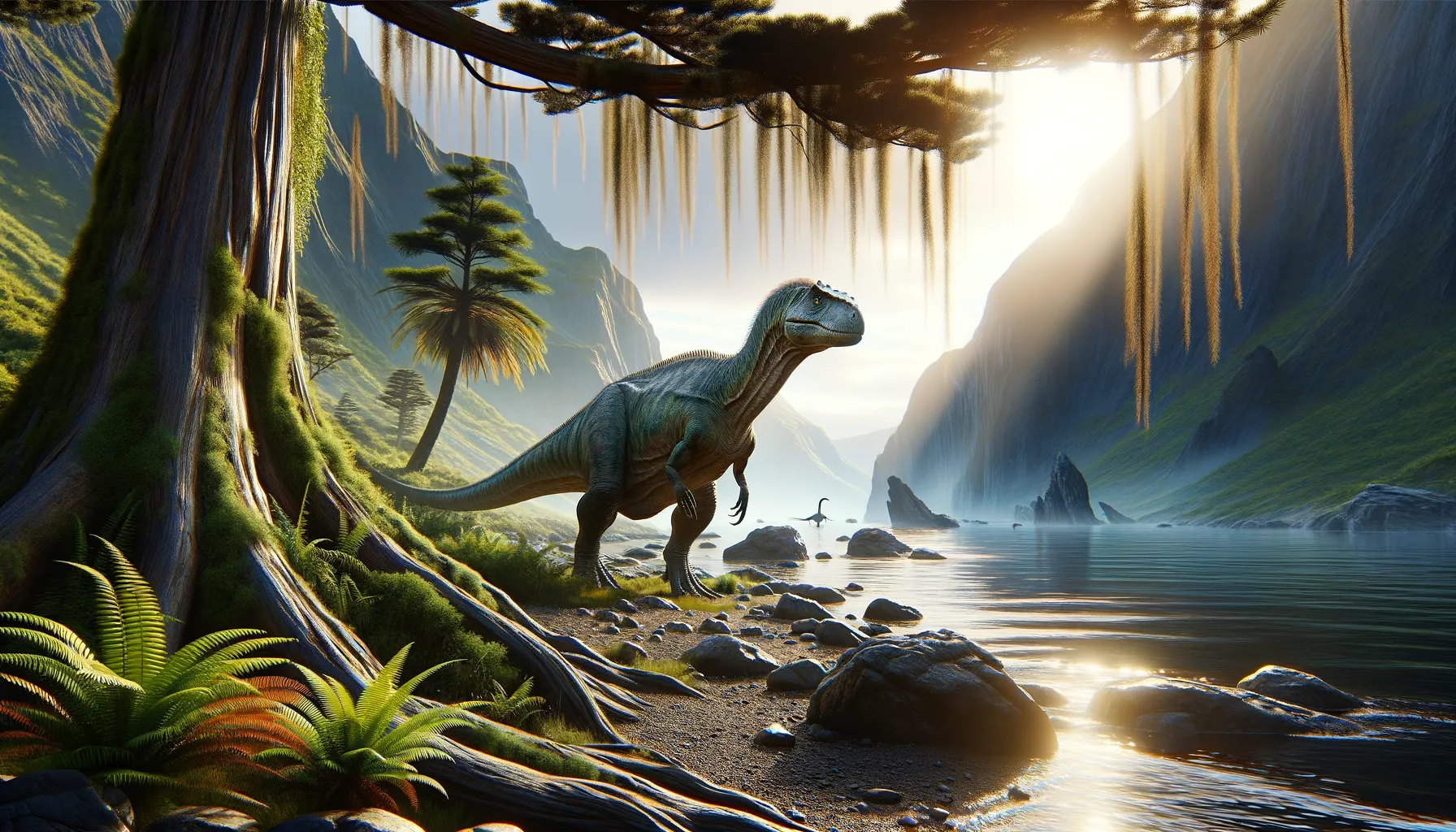
Clepsysaurus
An ancient predator of Triassic times.
Period
Triassic
Length
Around 4 to 5 meters long.
Height
Approximately 1.5 meters tall.
Weight
Likely weighed under 500 kg.
Clepsysaurus was a prehistoric reptile resembling a dinosaur that thrived during the Triassic period. Though there isn't extensive information about this species, it is thought to have been a medium-sized predator. Its fossils provide important insights into the evolution of prehistoric reptiles and their ecosystems, shedding light on diverse ancient habitats. Ongoing research continues to enhance our understanding of this intriguing reptilian species from the deep past.
Diet
Clepsysaurus is believed to have been carnivorous, feeding on smaller reptiles and possibly amphibians. Its sharp teeth suggest it was well adapted for hunting and consuming flesh.
Hunting
This reptile likely relied on stealth and speed to ambush its prey, utilizing its agility to catch smaller, quicker animals. The hunting methods remain largely speculative due to limited fossil evidence.
Environmental challenges
Living during the Triassic period, Clepsysaurus faced volatile climates with fluctuating temperatures and a mix of arid and humid regions. It had to adapt to frequent changes in plant and animal populations, impacting food availability. Competition with other predators might have been intense, requiring strategic adaptations for survival.
Speed
Little data available on precise speed.
Lifespan
Estimated to have lived several decades.
First discovery
First described in the early 20th century.
Fun Facts
- Clepsysaurus was a type of prehistoric reptile that lived during the Late Triassic period.
- Unlike some of the more famous dinosaurs, Clepsysaurus was not a giant; it is believed to have been a relatively small creature.
- Fossils of Clepsysaurus have primarily been found in the eastern United States, giving us clues about its habitat.
- The name 'Clepsysaurus' comes from Greek, likely referring to its distinctive tooth shape resembling an hourglass.
- Clepsysaurus is part of a less-known group of reptiles, making discoveries about it particularly exciting for paleontologists.
- This dinosaur lived long before the famous Tyrannosaurus rex, showcasing the vast timeline of dinosaur evolution.
- Clepsysaurus may have been a herbivore, feeding on the lush vegetation of its time.
Growth and Development
Clepsysaurus likely grew quickly to take advantage of rapidly changing environments. The development of its muscles and sharp teeth would have been crucial for its survival as a young predator. Juveniles needed to reach maturity swiftly to avoid predation from larger carnivores.
Habitat
Clepsysaurus inhabited regions that were a mosaic of environments, including forests, plains, and river valleys. These diverse habitats provided ample prey and hiding spots from larger predators. Shelter and reliable water sources would have been critical for thriving in such a volatile age.
Interaction with other species
Clepsysaurus likely had direct competition with other carnivorous reptiles, vying for similar prey. It would have had to navigate complex ecosystems with a variety of herbivorous prey and potentially dangerous carnivorous rivals. Social behavior with its own kind remains a mystery, but it might have had confrontational or neutral interactions with other species.
Natural lifespan
Its lifespan is estimated to have reached up to several decades.
Reproduction
Clepsysaurus probably reproduced by laying eggs, like many similar reptiles of its time. Parental care, if it existed, remains speculative, with evidence suggesting young might have been left to fend for themselves. Nesting behaviors remain largely unknown due to limited fossil records.
Social behaviour
Evidence of social behavior in Clepsysaurus is scant, with many assumptions based on related species. It might have been a solitary hunter, though temporary groupings could occur if resources were abundant. Social hierarchies or cooperative hunting are doubtful but not entirely dismissible.
Fossil locations
Fossils attributed to Clepsysaurus have been found in regions that were once part of Gondwana during the Triassic period. These fossils are mainly uncovered in what is now North America, providing crucial insights into its distribution. Paleontological studies in these areas continue to glean more about its existence.
